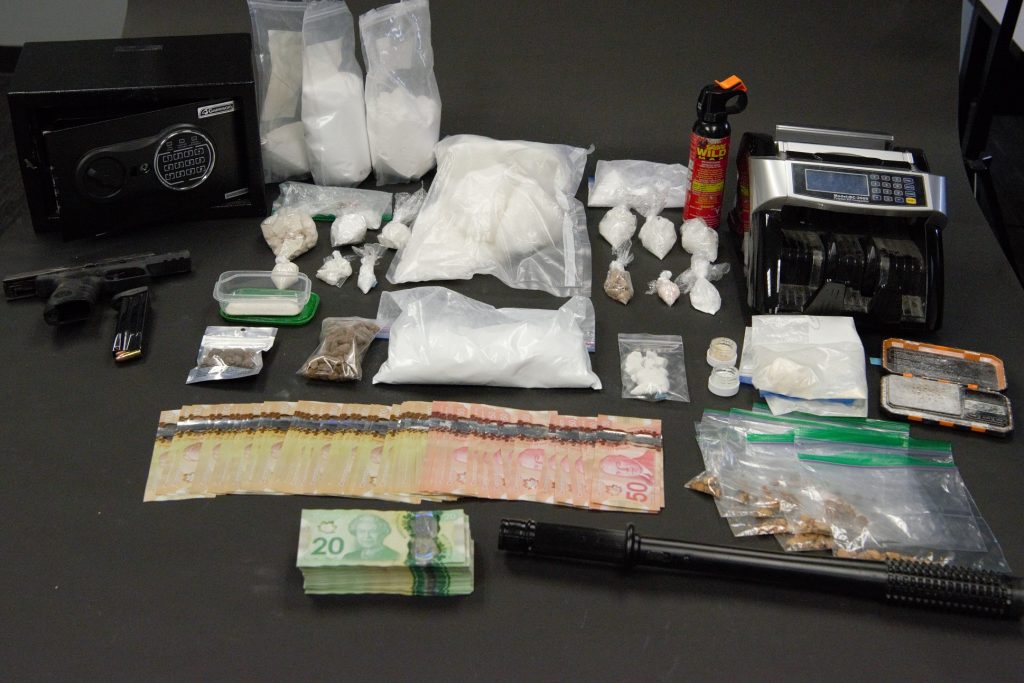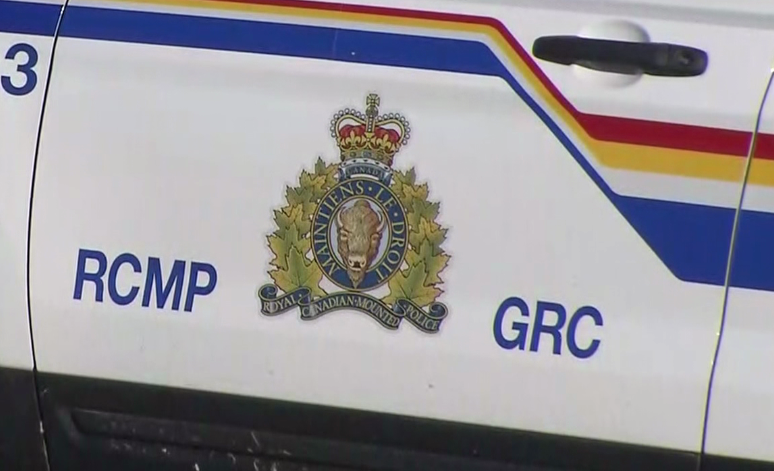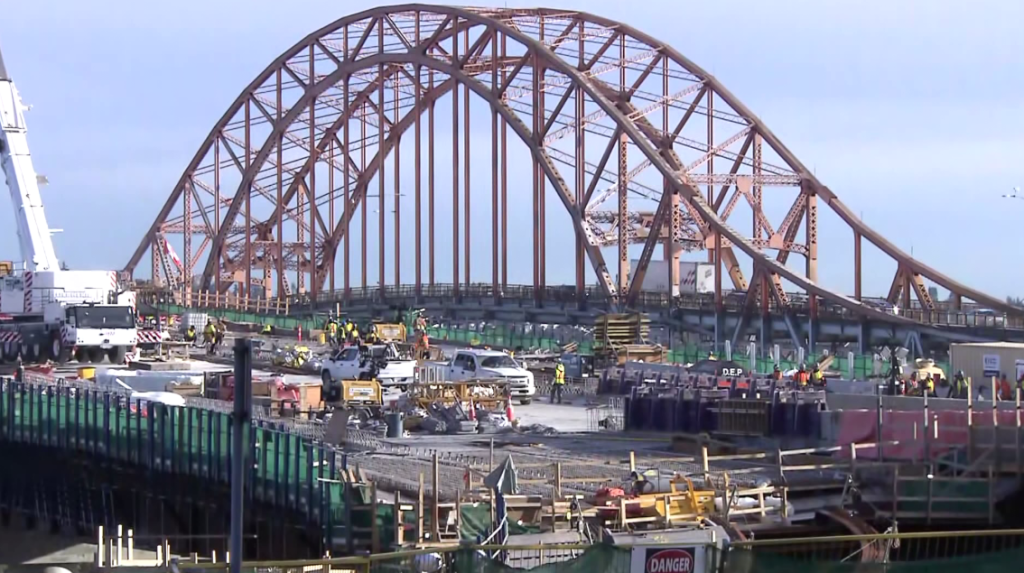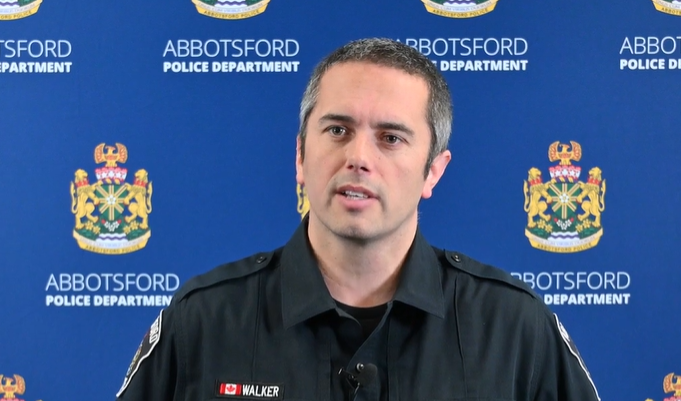Police drug seizures do more harm than good, B.C. experts say

Posted March 19, 2024 1:01 pm.
Last Updated March 20, 2024 7:13 am.
As police in B.C. and across Canada show off their recent drug busts and highlight efforts to take illicit substances off the black market, experts in public health and harm reduction explain these kinds of seizures do more harm than good.
There’s a growing body of evidence that finds fatal overdoses from unregulated toxic drugs actually increase after police departments seize illicit drugs.
Nicole Luongo, systems change analyst at the Canadian Drug Policy Coalition, shared that drug seizures are often “celebrated” as they “remove dangerous drugs from the street and keep communities safer.”
“But the data doesn’t bear that out,” Luongo noted.
“There was actually a scoping review published quite recently, looking at 14 studies with U.S.-based data, around the associations between drug seizures and overdose mortality. In that review, the authors found that 12 of the 14 studies that contain a statistical test of association between those two variables, identified that overdose mortality, in geographic proximity to the seizure and over specific time periods, immediately following it actually increases,” she explained.
One study Luongo referenced is from Brown University in 2023. That study said there is a need to emphasize harm reduction over prohibition to address unintended consequences, such as the increase in overdose deaths.
While Luongo noted the studies look at correlation rather than causation, the associations are strong. She explained one potential causation identified is the “iron law of prohibition.”
“[It] refers to the documented phenomenon that, as law enforcement becomes more intense around black markets and specifically unregulated drug markets, the potency of those unregulated substances is going to increase,” she explained. “The harder the enforcement, the harder the drugs.”
Luong said the theory has been retrospectively tested against the era of alcohol prohibition, noting that during that time, alcohol became stronger and more potent, to try to evade law enforcement.
“More potent forms of substances are just more efficient in a business model,” she explained. “They take up less space and storage, they weigh less, they sell for more money. And so producers, illicit producers, are also looking to evade detection, so smaller, more potent quantities are less likely to be seized.”
While there is limited data on seizures of personal-use amounts of drugs and their consequences, Luongo explained that any disruption to the market exacerbates risk when “we talk about the impacts of street-level policing.”
“We know that not even interactions with police but the mere prospect of interacting with police and having one’s drugs seized, promotes isolated or hidden drug use. Street-level policing is very much linked to overdose death and very serious harms” she said.
Luongo said, oftentimes, people who use drugs have a trusted source — someone whom they have previously bought from and who may have had the drugs tested. When law enforcement intervenes and takes these illicit drugs off the market, drug users are forced to enter into riskier situations, buying and using illicit drugs from sources they do not know.
“When those drugs are seized, [users] are frequently at a point where they’re starting to experience physiological withdrawal symptoms. They might not be in proximity to their trusted seller, so they’re engaging with the market more regularly, and that exacerbates risk,” she said.
While B.C. recently passed its first anniversary of decriminalizing the possession of small amounts of illicit drugs, Luongo says there are still concerns about “engagement with the criminal justice system.”

Luongo said the backlash against decriminalization, including a “wave” of municipal bylaws around prohibiting public drug use and consumption, has seemed to make police feel “emboldened to actually increase their engagement with people who use drugs.”
The Vancouver Police Department refuted claims that drug seizures have increased, saying they’ve “decreased dramatically” since the pilot began.
Meanwhile, Corey Ranger, a Vancouver Island-based nurse and president of the Harm Reduction Nurses Association, said it’s really important to consider what the real-life impacts of drug seizures are.
“We’ve seen it for decades: police lay the drugs out on the table for people and photos, and they say we’re getting drugs off the streets. But that’s not reflected in the community. That’s not reflected in our observations. That’s not the impact that drug seizures have,” he said.
“Our observations are that it does not decrease demand and it does not decrease supply. What we actually see when we’re working in community is that these busts, these seizures, actually increase the risk of death.”
Ranger echoed Luongo’s assessment that seizures by police force drug users to access the “less predictable” supply chain, and incentivize new suppliers.
Seizures also promote the manufacturing of counterfeits, Ranger explained, and when drug users have even a short period of sobriety, their tolerance can decrease. “So if they get a bad batch, there’s a high likelihood that overdose could follow.”
Overdose alerts issued days after Vancouver Island drug bust
Ranger believes a recent drug bust by the Campbell River RCMP — which included Hydromorphone and fentanyl — shows a “clear cause and effect” relationship, as two weeks later, an overdose advisory for the North Island was issued. Just a few days later, another overdose advisory was issued in Victoria and Nanaimo.
“[Officials are] spending a lot of time getting distracted about whether or not there are [prescribed] safe supply drugs being found in drug seizures, and we’re completely omitting the harms of those drug seizures, and the fact that these drug seizures are pushing people towards a less-predictable, more-volatile drug supply, and increasing risk for death,” Ranger said.
“Working in community, working in overdose prevention sites and supervised consumption services for the last 10 years, … places where people often access the unregulated drug supply, whenever large drug seizure happens, we see a new, more-volatile batch of drugs immediately replace that supply and increase risk.
“Even when we see small-scale drug seizures, when people have their personal supply confiscated, which still happens despite decriminalization in B.C., we see people experience harms and we don’t see them actually stop accessing the unregulated drug supply,” Ranger explained.
Ranger added it’s critical that questions are asked of police about the efficacy of seizures when they are “laying those drugs out on the tables.”
“Is this decreasing demand? Is this decreasing the supply? Is this effective?” he asked.
Vancouver Coastal Health Deputy Chief Medical Health Officer Dr. Mark Lysyshyn explained that public health officials have been aware of the “iron law of prohibition” phenomenon for a while.
“We know that when you prohibit drugs and take enforcement action against the people who make or distribute the drugs, that incentivizes them to create more concentrated, and thus more potent and thus more toxic drugs,” he told CityNews.
Lysyshyn said this can directly be seen in the toxic drug crisis that has killed over 13,000 people in B.C. since a public health emergency was declared in April 2016.
“Rather than selling heroin, drug dealers and makers have started using more potent opioids, such as fentanyl and various other analogues, because it’s easier to avoid detection by law enforcement,” he said, adding this could be seen before cannabis legalization when synthetic cannabinoids came on the market.
However, Lysyshyn explained that for VCH’s jurisdiction specifically, there isn’t enough data to relate toxic drug deaths to drug seizures, as data on seizures is not broadly collected, and the population of drug users in the health authority is heavily centralized to a small area.
“But, we did see, on a macro level, the massive disruption to drug supply chains that happened as a result of the pandemic did make the drug supply here in B.C. much more toxic,” he said.
“We’ve seen that across North America. [It] was a huge natural experiment of what happens when you shut borders and you make it more difficult for people to distribute drugs — it really changes the drug supply and we saw that it made it more toxic.”
Personal seizures increase risk of overdose: VCH
Lysyshyn noted that one of the reasons why VCH supports decriminalization is that the health authority hopes it will decrease stigma to help people access treatment. In turn, he said, that could decrease the risk of overdose, “because when drugs are seized from somebody, it puts them in a very risky scenario, they have to obtain new drugs, and they have to do it quickly.”
“[Decriminalization is] not going to be at the scale to reverse the overdose crisis, … but we do hope that if people are not having their drugs seized as often, that’s partly what will lead them to feel more comfortable going into health-care environments, or using in public so that somebody can observe them if they have an overdose,” he explained.
The Canadian Drug Policy Coalition is calling for an immediate increase in personal possession amounts under B.C.’s decriminalization pilot, to reduce engagement with law enforcement and risk of overdose.
“The kind of resources that we’re currently directing towards these larger drug seizures, I think, would be much more valuable if directed towards things like health, housing, policies, and services that actually are verifiably going to improve public health and safety. Because, again, the more we direct resources towards enforcement does not alter consumer demand,” Luongo explained.
“Doing the busts and getting toxic drugs off the street are actually two distinct things,” she added. “We absolutely need to get toxic drugs off the street, but the way to do that is not through enforcement, it is through offering pathways for people to secure pharmaceutical grade alternatives to the illegal unregulated drug supply.”
CityNews reached out to the Ministry of Health and the Ministry of Public Safety, however, was directed to law enforcement.
In a follow-up statement, the Ministry of Mental Health and Addictions told CityNew that decriminalization is just “one part” of the province’s work to address the toxic drug crisis.
“The threshold in B.C.’s model was based on input of the Core Planning Table which includes police, people with lived experience, municipalities, and public health. Ultimately, Health Canada made the decision of 2.5g. At this time, there are no plans to change the model and early data suggests it is offering protection to the majority of people,” the ministry said in a statement.
In the province as a whole, the ministry said possession-related police offenses have decreased by 77 per cent since Jan. 31, 2023, and the province has seen a 96 per cent decrease in personal possession drug seizures under the 2.5g threshold.
“The Ministries of Mental Health and Addictions and Public Safety and Solicitor General worked with police leadership and other stakeholders to develop training to support B.C.’s more than 9,000 front line police officers with the knowledge and tools to implement decriminalization. Government provided $50,000 towards developing training resources,” the ministry explained.
“The training for police ensures that they understand how decriminalization addresses stigma, their role in the successful implementation of decriminalization, and the importance of a public health approach to substance use.
“The Ministry will continue to work closely with key partners to evaluate and monitor the program to ensure the desired outcomes continue to be met and will make adjustments as needed.”
Editor’s note: CityNews has removed some information about drug seizures in Vancouver until more data about trends is reviewed.








